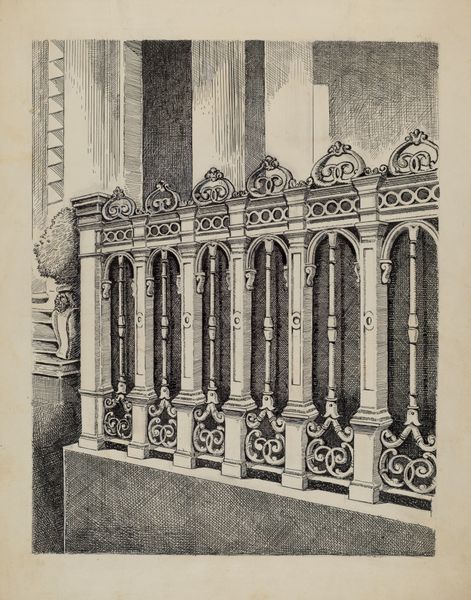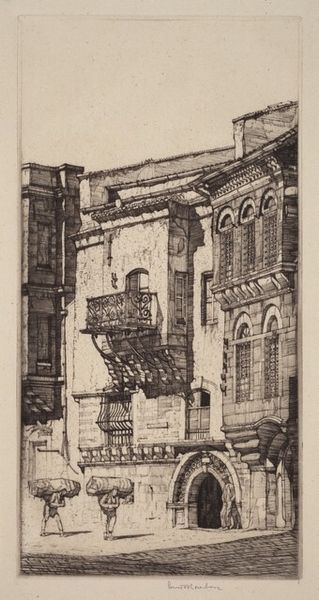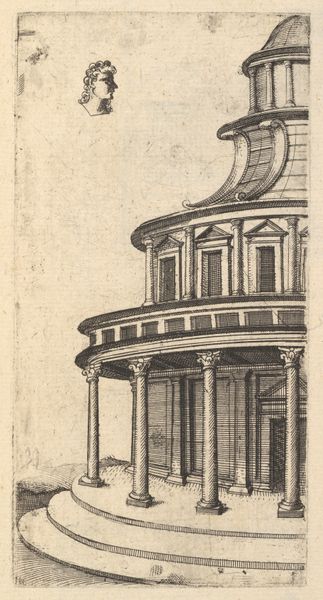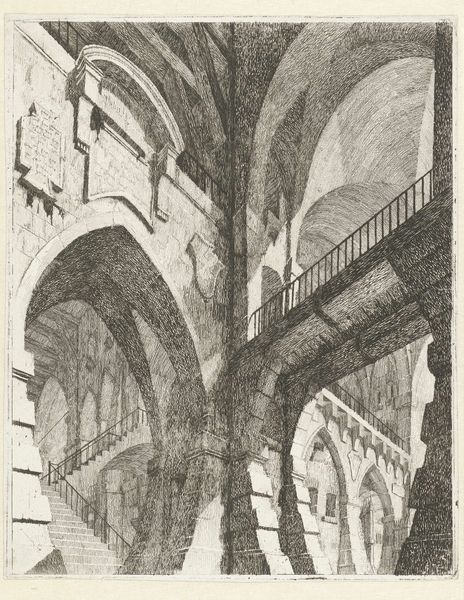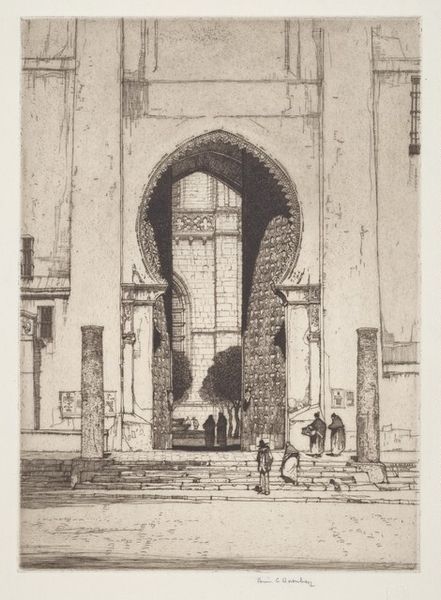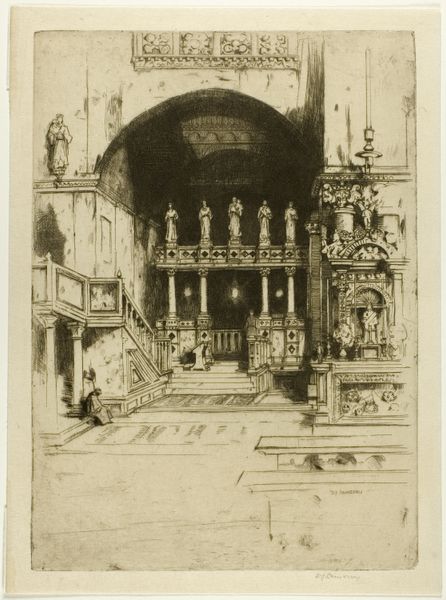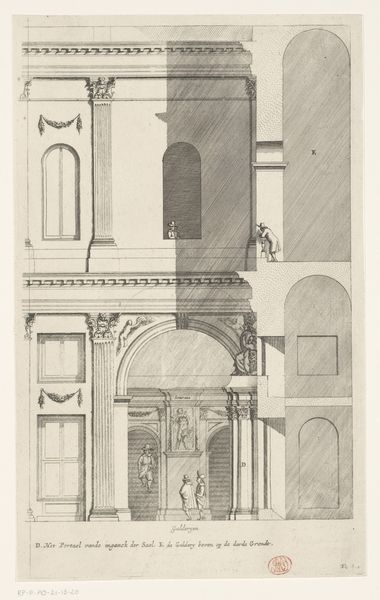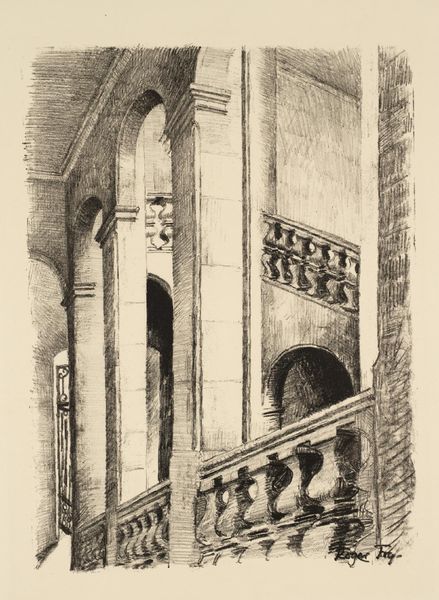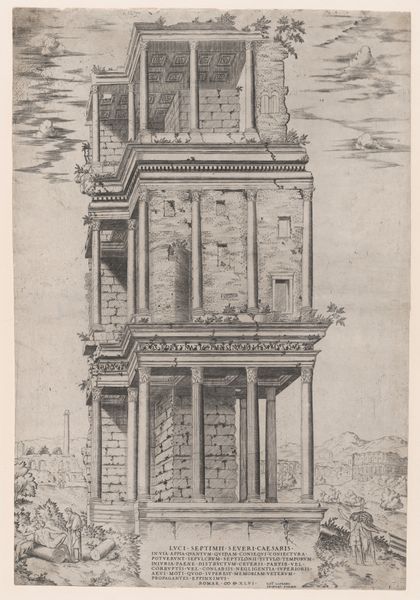
drawing, print, etching, architecture
#
drawing
# print
#
etching
#
line
#
islamic-art
#
architecture
Copyright: National Gallery of Art: CC0 1.0
Curator: So, here we have Louis Conrad Rosenberg's "Aya Sophia No.2," an etching from 1927. Editor: My first thought? A kind of ethereal grandeur. The architecture feels imposing yet also light, almost as if the very stone is breathing. What captures you most? Curator: Definitely the layers of history embedded here. Hagia Sophia, originally a Byzantine church, then a mosque, now a museum. Each shift leaving its mark, both physically and culturally. The drawing itself highlights the power dynamics embedded in architectural spaces like this. Editor: Yes, and consider the materiality of the etching itself. Rosenberg meticulously captures the surfaces - the cool stone of the columns, the metal of the chandeliers. He directs our eye to these manufactured materials but at the same time offers the contrast between their inherent form, and their spiritual purpose for congregants. Curator: It prompts questions about cultural ownership, the representation of religious spaces by artists from different backgrounds. Is Rosenberg merely observing, or is he engaging in a deeper dialogue about faith, identity, and cultural appropriation? I mean, there are people from many backgrounds portrayed. Editor: Indeed. It's a dance between objective representation and subjective interpretation through line and composition. And the repetitive nature of printmaking -- creating multiples -- offers wider access to that architectural experience beyond any privileged few. That act of printing creates further layers of context in itself. Curator: And in terms of the social context, during the interwar period, travel and documentation of historical sites were becoming increasingly popular. This etching situates itself within that framework, inviting us to reflect on the colonial gaze and its impact on how we perceive and interact with culturally significant landmarks. Editor: Absolutely. Thinking about its production and distribution opens up questions around how such works fuel orientalist fantasies of access and ownership. Well, I definitely see that it’s got more depth than a pretty facade. Curator: Agreed. "Aya Sophia No.2" isn't just a visual representation; it's a cultural artifact reflecting complex interactions between power, faith, and artistic expression. Editor: A beautifully crafted and evocative piece, it makes us think about both physical construction, and social construction too.
Comments
No comments
Be the first to comment and join the conversation on the ultimate creative platform.
